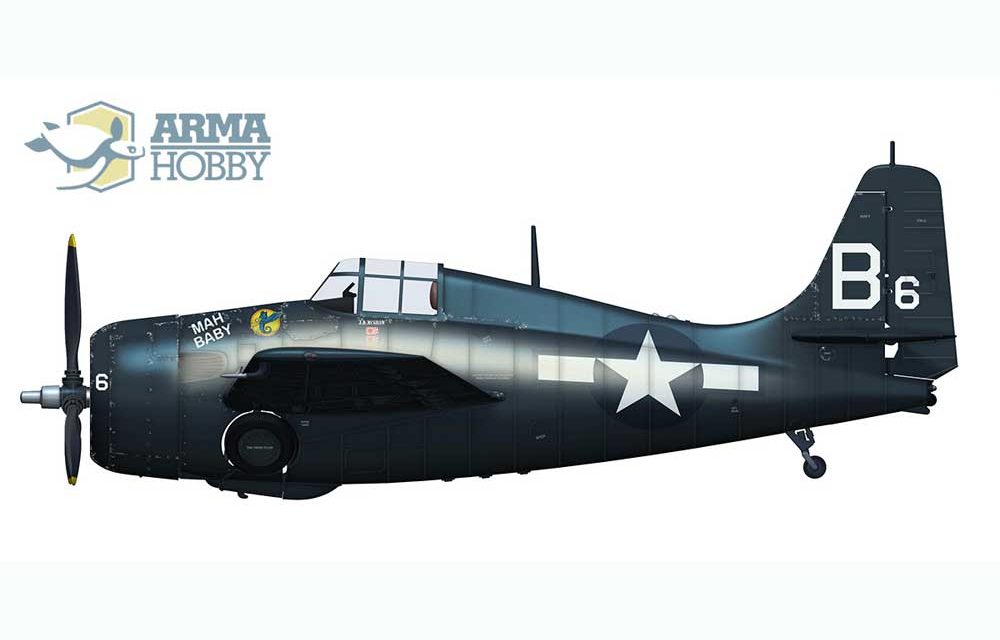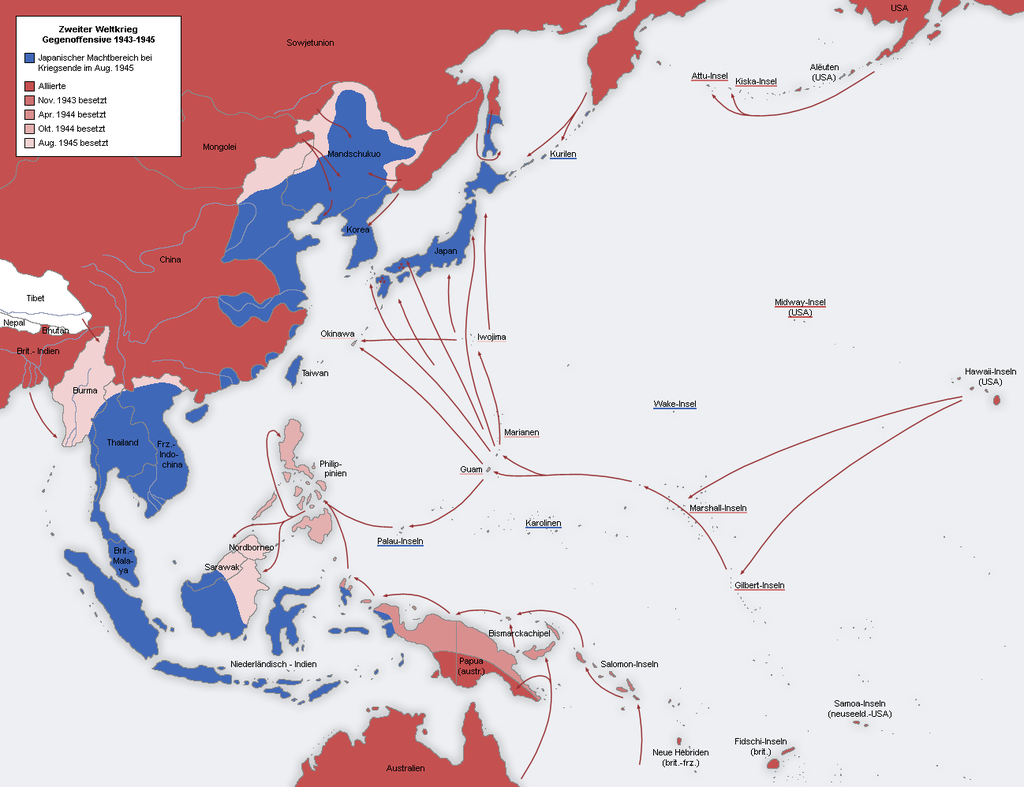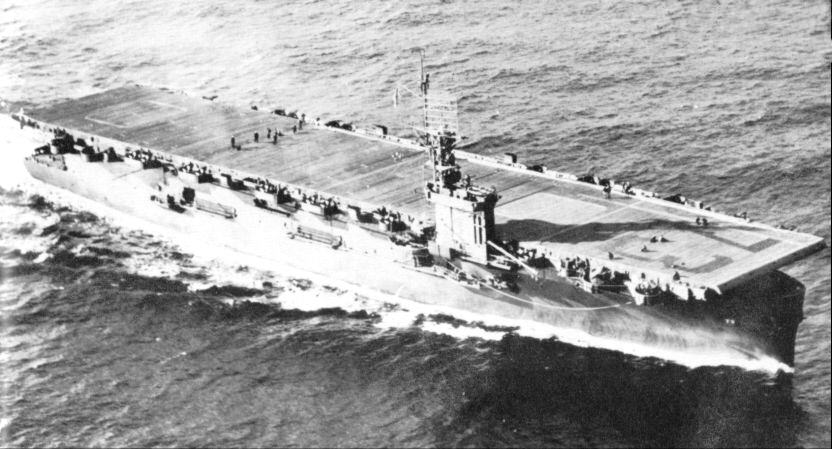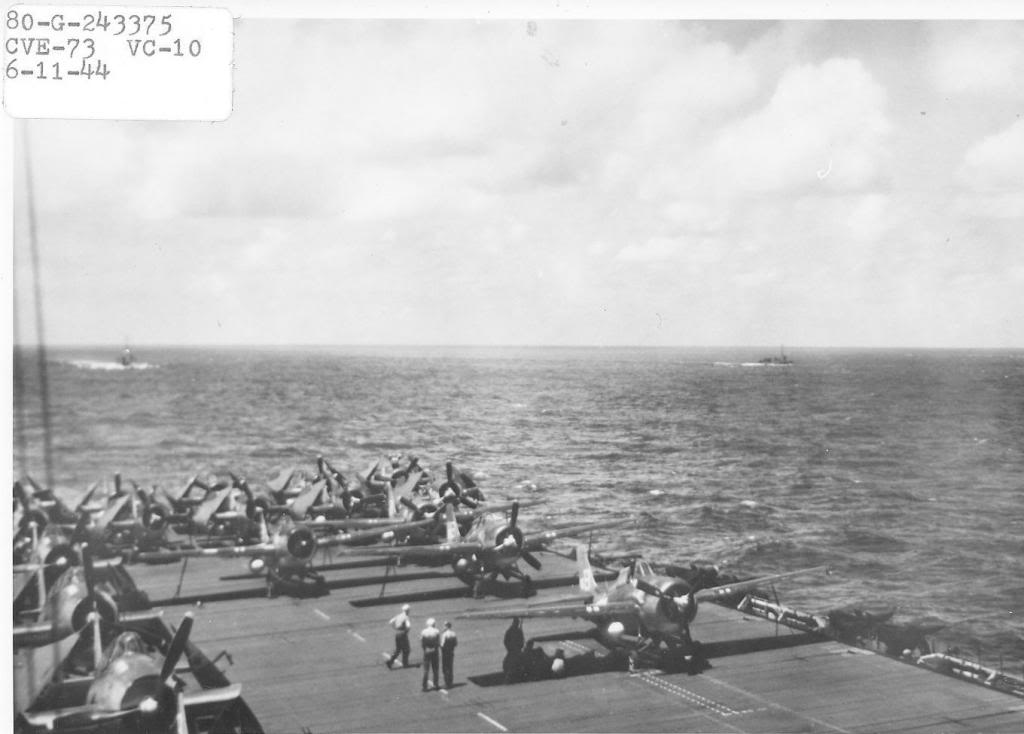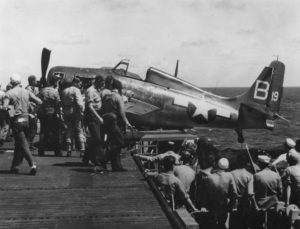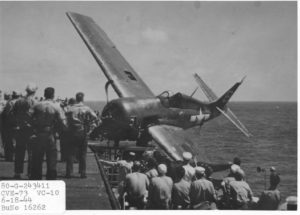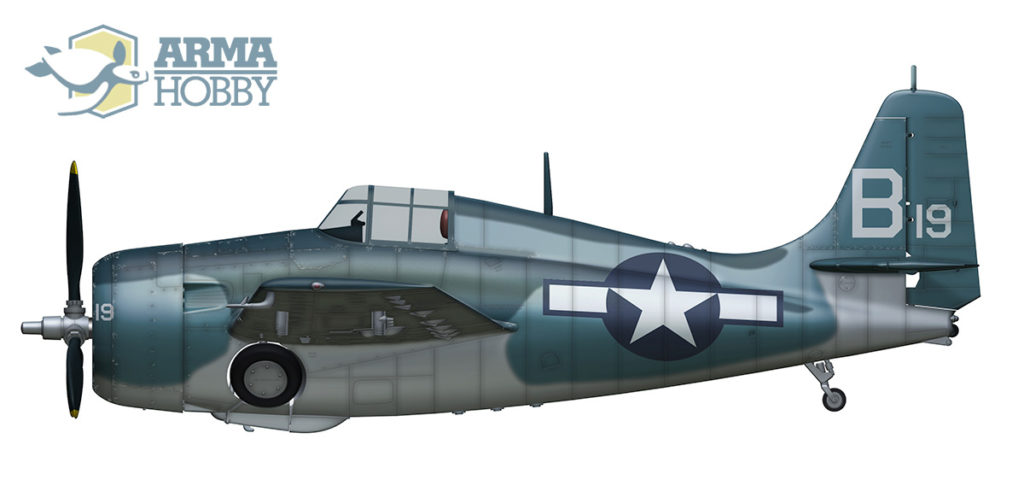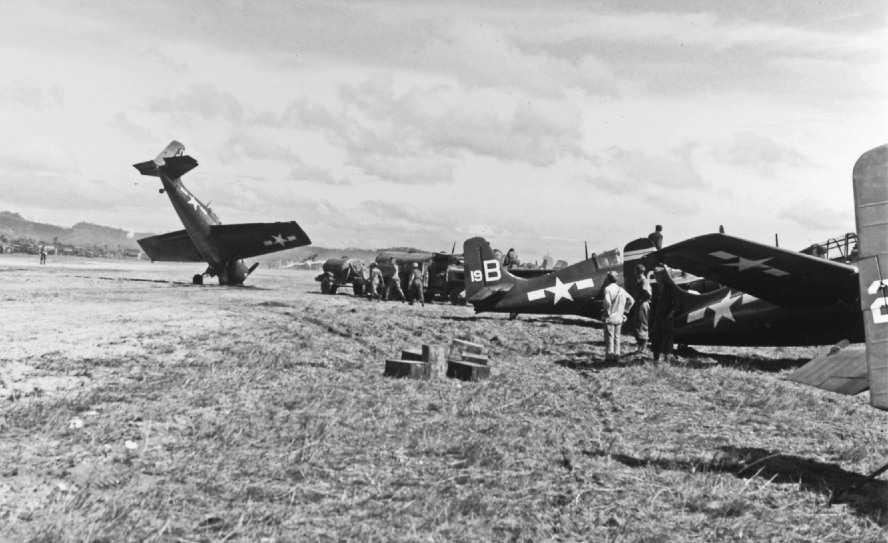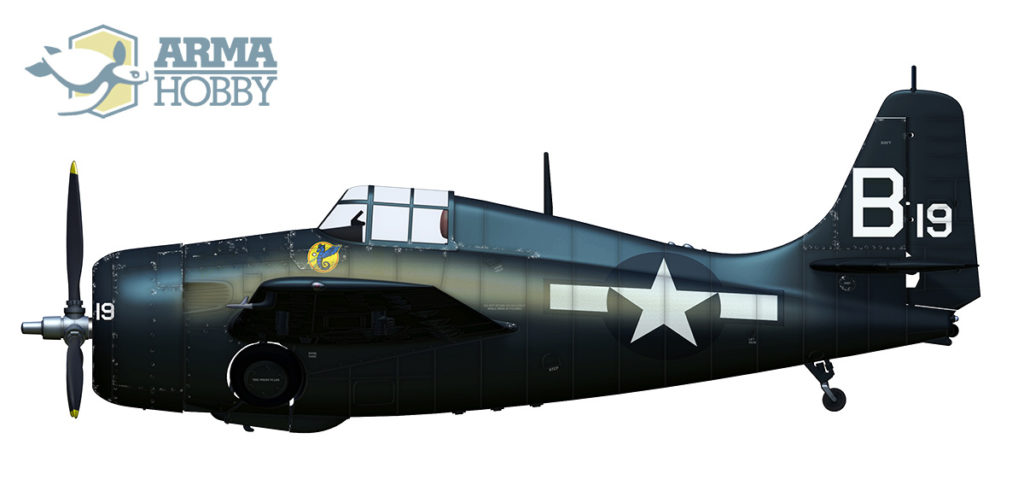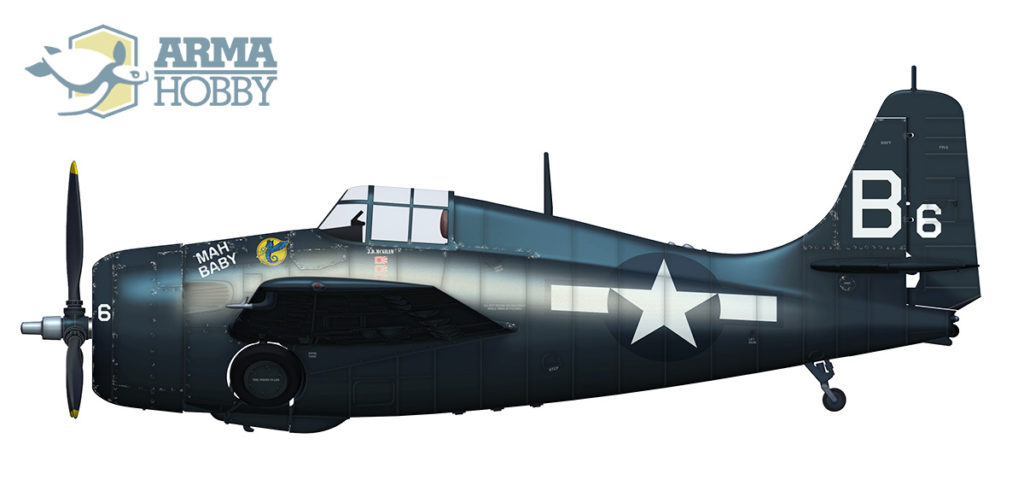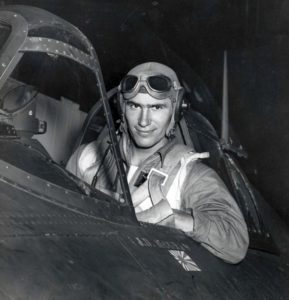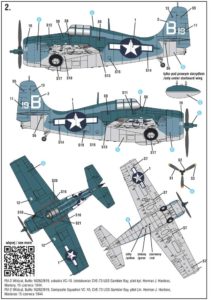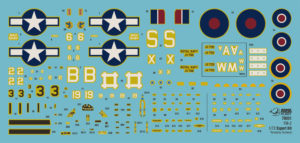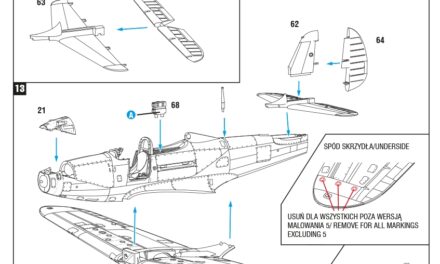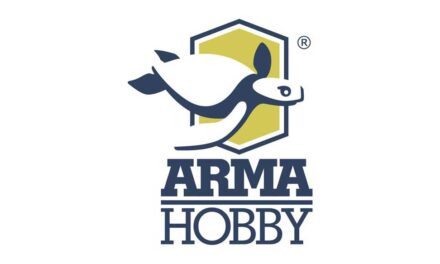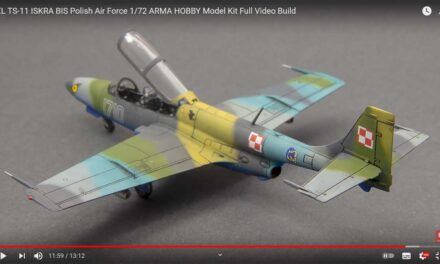The combat of US Navy escort carriers of Taffy 3 Task Group with Japanese battleships near Samar Island In October 1944 is thought to be the most heroic combat in the history of the US Navy. Like David against Goliath, American destroyers and aircraft carriers managed to defeat the much stronger enemy. In that struggle, Grumman FM-2 fighter pilots played a very important role. One of them was Ensign Joseph Dennis MacGraw
The Jeep Carriers
When at dawn of 25th October 1944 Japanese battleships salvos jolted Cmdr Sprague’s aircrews into combat, American escort carriers, known as the ‘Jeep Carriers”, had already taken part In victorious campaigns of 1944. They took part In the invasions of the Marianas, Peleliu, and Hollandia in New Guinea. Their task was to provide air cover of invasion forces and air support for US Marine Corps units fighting on the ground.
Invasion fleet usually involved 20 escort aircraft carriers, mainly the Casablanca Class ships, which carried Composite Squadrons. Each squadron included a few Grumman TBF-1C/TBM-3 Avenger torpedo-bombers and several FM-2 Wildcat fighter planes and was marked as VC + a number of a squadron. Those were true workhorses of the US Navy. The service was hard and demanding. Any mistakes or accidents could lead to death or severe injuries among ship crew. Those ships and their aircraft were active day after day. They protected invasion force against enemy submarines and aircraft. They also attacked ground targets with bombs, rockets and machine guns.
Allied island-hopping (Leapfrogging) campaign 1943–1945: Blue – Japanese-held territory Aug. 1945; Dark red – Allied territory; ; ed – Occupied Nov. 1943; Dark pink – Occupied Apr. 1944; Pink – Occupied Oct. 1944; Light pink – Occupied Aug. 1945. Map – San Jose wikimedia commons CC BY-SA 3.0
Leapfrogging
The service of „Jeep Carriers” was dictated by the „Leapfrogging Strategy” – invading Islands on the way to the Philipines and finally to the heart of the Japanese Empire. The Japanese called them „the fleet that comes to stay” as they didn’t leave before the campaign finished and they didn’t attack remote targets as the Fleet carriers. The second wave of escort carriers protected supply transports between Pacific bases against submarines. Another role was to transport New aircraft to replace lost ones. It was a very important task as each camping brought losses to the fleet carrier squadrons. Without the „Jeep Carriers,” it wouldn’t be possible to penetrate enemy territory so fast. After the war, those ships had another important mission – repatriation of war prisoners and soldiers back home.
USS Gambier Bay CVE-73
Escort Carrier CVE-73 USS Gambier Bay, photo US Navy
USS Gambier Bay was unique among escort carriers. Built at the end of 1943 In the Kaiser Shipbuilding Company as so-called „Bonus Carrier”. That shipyard was contracted to build 16 Casablanca Class carriers that year but was asked to build two more. The shipyard’s crew picked up the gauntlet and by the end of 1943 built one more – the nineteenth one – USS Gambier Bay. A Total of 50 Casablanca Class escort carriers were built between November 1942 and July 1944. It was 156 metres long, its top speed 19 knots and displacement 7900 tonnes. It had a small Island, one 127 mm cannon on the stern below the landing deck and anti-aircraft artillery consisting of 14x40mm and 20x20mm. It had 2 lifts, a catapult and 28 aircraft. It didn’t have any aromour nor heavy artillery but it wasn’t meant to fight with heavy ships of the Japanese Imperial Navy. It was sunk by the IJN battleship Yamato on the 25th October 1944 at 09:11 local time.
IJN Yamato
Battleship Yamato, a day before Battle of Samar, being attacked by aeroplanes from Fleet Carriers, 24 October 1944, photo: US Navy 80-G-325952
Yamato was the biggest battleship in history and one of the three planned (the others were Musashi sunk In the Sibuyan Sea and Shinano which was converted into a carrier sunk during its first cruise). It entered the service on 16th December 1941. Its load displacement was 65000 tonnes, it was 263 metres long and its top speed was 27 knots. In 1945 its armament was 9x460mm, 6x155mm, 24×127 mm and 162 x 25mm. Its side aromour was 410mm thick, main artillery turrets had 650mm armour and the deck more than 200mm. It had a catapult and 7 seaplanes. It was sunk near Okinawa on the 7th April 1945 by American aircraft from fleet carriers.
In VC-10 on USS Gambier Bay
After training and series of landings on the training carrier on the Great Lakes, young Ensign Joseph Dennis McGraw was expecting a post on fleet carriers. He thought that he would fly Grumman F6F-3 Hellcat. But he was sent to VC-10 composite squadron basing on USS Gambier Bay and he flew „Wilder Wildcat” FM-2. His first campaign was the invasion of the Marianas. During the battle of Saipan he took part In the protection of invasion force.
Shortly before the invasion, the archipelago was heavily attacked by aircraft from the fleet carriers and initially, the invasion didn’t meet any aerial opposition. The first aircraft which the pilots of the VC-10 met were reconnaissance planes. Joe McGraw scrambled to intercept G4M Betty, a twin-engine Japanese navy bomber on a reconnaissance mission at 24,000 ft. It was very high for FM-2 Wildcats as they didn’t have a two-stage supercharger. They had better performance than earlier versions yet only on lower altitudes. Four Wildcats were slowly gaining height to intercept a sole target. J.D. was the last one In the group but after leaving cloud he was the first one to shot at Betty damaging its engine. The enemy pilot didn’t want to give up and the American fighter had to chase it down to the sea level. Looking at the place where the Japanese bomber hit the sea he was wondering what would it be like to meet Japanese fighters if the bomber crew was so tough. He learnt this four months later. However, the First Battle of the Philippine Sea was starting. The main role was played by the fleet carriers, although escort carriers also played active role In the battle.
USS Gambier Bay flighdeck, June1944. Avengers and wildcats tight packed on a Jeep Carrier. FM-2 with usual one drop tank under wing attached. Photo US Navy 80-G-243375.
He lost two planes
J.D. soon learnt what it is like to lose his plane. Within two weeks he lost two of them.
When he was taking place on his plane In the evening of 18th June he didn’t realise that he wouldn’t be able to leave it on his own. It was supposed to be a routine mission. Every day, soon before dusk, two warmed up Wildcats were in readiness to scramble to intercept enemy torpedo-bombers. When enemy plane approached, heading from the head of the carrier formation, Wildcats took off and immediately fall under fleet anti-aircraft shelling. How did it happen? It’s simple. Losing a plane wasn’t as important as a carrier. So the AA crews were shooting at enemy planes without looking at friendly planes.
 J.D. mentions that only three parts of his plane weren’t hit – a fuel tank, the engine and the pilot. Flaps, a radio and light position stopped working. However, undamaged planes had to land first. When his turn came it took him several approaches before he managed to land. After landing he was unable to leave the cockpit on his own. At that moment a mechanic responsible for that plane came and ask „What have you done to my plane, Mr McGraw?’. After that question, the stress left him and with the help of the crew he manager to leave the damaged cockpit. It was found that the aircraft was hit 35-36 times by 40mm cannons. After removing working parts the plane was thrown into the ocean. It was most probably BuNo47039 struck out on 18th June 1944 near Saipan.
J.D. mentions that only three parts of his plane weren’t hit – a fuel tank, the engine and the pilot. Flaps, a radio and light position stopped working. However, undamaged planes had to land first. When his turn came it took him several approaches before he managed to land. After landing he was unable to leave the cockpit on his own. At that moment a mechanic responsible for that plane came and ask „What have you done to my plane, Mr McGraw?’. After that question, the stress left him and with the help of the crew he manager to leave the damaged cockpit. It was found that the aircraft was hit 35-36 times by 40mm cannons. After removing working parts the plane was thrown into the ocean. It was most probably BuNo47039 struck out on 18th June 1944 near Saipan.
Photo: Joe McGraw in the cockpit of just landed aeroplane BuNo47039. Clear view of pilots name one kill marking. Canopy damaged with 40mm hit, 18 June1944. Photo NARA via Berett Tilman.
He lost another aircraft during a break between campaigns during a cruise to Eniwetok. During patrol flight, the external fuel tank broke from his wing. Normally FM-2 could carry two external tanks, but usually only one was installed. Such patrols didn’t last long normally and if pilots met enemy they had to drop them. It was more economical only to use one. But this time the tank ripped off and hit the stabilizer. JD parachuted and had to spend a few days on a destroyer who saved him from the ocean. To reclaim his pilot from the destroyer, the carrier had to pay – traditional „money” was a portion of ice cream. The plane was FM-2 Wildcat BuNo 16289, lost on the 3rd July 1944 (sometimes sources say that it was the 24th June) on the way from Saipan.
It is not McGraw’s aeroplane! Wildcat BuNo16262 crash landed by Ltn. Herman J. Hardess on 15th June. Wreck was scrapped on 18th June. Photo US Navy.
FM-2 Wildcat, BuNo 16262/B19, Composite Squadron VC-10, CVE-73 USS Gambier Bay, pilot Ltn. Herman J. Hardess, Marianas 15 June 1944. Artwork by Zbyszek Malicki.
Next target – The Philipines
During the invasion of the Philipines in October 1944, USS Gambier Bay was a part of Taffy 3 task unit consisting of 6 escort carriers. First missions were carried out to cover the beachhead and to support the US Marine Corps field units.
Escort carriers task units east of Samar Island, 25th October 1944
Rear Admiral Thomas L. Sprague’s Task Unit 77.4.1 (“Taffy 1”)
- Carrier Division 22: Sangamon, Suwannee, Santee, Petrof Bay.
- Carrier Division 28: Chenango and Saginaw Bay on the way to Morotai transporting aeroplanes to repair (24 October, a day before the Battle and returned after completed).
Rear Admiral Felix Stump’s Task Unit 77.4.2 (“Taffy 2”)
- Carrier Division 24: Natoma Bay and Manila Bay,
- Carrier Division 27: Marcus Island, Kadashan Bay, Savo Island, i Ommaney Bay.
Rear Admiral Clifton Sprague’s Task Unit 77.4.3 (“Taffy 3”)
- Carrier Division 25: Fanshaw Bay, St. Lo, White Plains, Kalinin Bay,
- Carrier Division 26: Kitkun Bay and Gambier Bay.
- Niszczyciele: Hoel, Heermann oraz Johnston, destroyers escort: Dennis, John C. Butler, Raymond, oraz Samuel B. Roberts.
On the 24th October J.D intercepted a group of Lilly bomber aircraft and destroyed two of them. Intense combat of that day was only an interlude to that small carrier finest hour on the following day. McGraw was going to take part In the first patrol mission. But the Japanese were closing In to destroy invasion force with their heavy artillery when American fleet carriers would leave their position to chase the Japanese carrier force.
Ensign Joseph D. McGraw passing over Yamato battleship, 25 October 1944. Artwork by Piotr Forkasiewicz.
Coffe and unexpected shower
 At night old American battleships of the invasion fleet defeated Japanese ships of the southern group in the Surigao Strait. So when the new day started no-one expected any problems and a daily routine returned to American ships. While drinking his coffee McGraw Heard „Action stations” and soon a sound of an explosion. Japanese battleship Yamato and other heavy ships started shelling USS Gambier Bay. It was Adm Kurita’s task force heading towards the invasion fleet to destroy it. The fountains of water caused by shells helped Japaned gunners set their gunsights on American ships.
At night old American battleships of the invasion fleet defeated Japanese ships of the southern group in the Surigao Strait. So when the new day started no-one expected any problems and a daily routine returned to American ships. While drinking his coffee McGraw Heard „Action stations” and soon a sound of an explosion. Japanese battleship Yamato and other heavy ships started shelling USS Gambier Bay. It was Adm Kurita’s task force heading towards the invasion fleet to destroy it. The fountains of water caused by shells helped Japaned gunners set their gunsights on American ships.
Photo- USS Gambier Bay under fire from Yamato (marked by circle). Photo: US Navy.
Five minutes after the alarm sounded J.D. took off avoiding fountains of water caused by Japanese shelling and joined VC-10 led by Cmdr Huxtable. Twenty minutes later Avengers and Wildcats started attacking enemy ships. McGraw made 11 real or mocked attacks on battleships and cruisers. Both Avengers and Wildcats were mid-wing monoplanes and from the front they looked alike. Mocked attacks made by Wildcats dispersed anti-aircraft fire and allowed torpedo-bombers to make their attacks. They also force Japanese ships to constant changes in their course. It slowed down the Japanese chase, so those attacks were not completely fruitless.
VC-5 Wildcats take off from escort carrier CVE 71 USS Kitkun Bay. Aeroplane fitted with one fuel tank only. In the background USS White Plains (CVE-66) under fire. Photo: US Navy.
The struggle
Both sides suffered heavy losses. Japanese cruisers Chikuma (after courageous action of American destroyers) and Suzuya were sunk by American aircraft. Chokai was hit by a single 5 in. shell from USS White Plains escort carrier which destroyed torpedo tube which exploded and severely damaged engine room. The ship left the battle line and was later sunk by Avengers.
USS Gambier Bay was closest to the enemy fleet and was sunk soon past 9 o’clock. Two hours later another carrier, USS St Lo, was hit and sunk by Kamikaze. Japanese suicide attacks damaged two more carriers. The sole Taffy 3 carrier which escaped any damage was USS Kitkun Bay.
Wildcats on the Tacloban airfield on Leyte. One of them is from the Gambier Bay (B19). Photo: National Archives.
But it was only the beginning of McGraw’s odyssey. When his plane was running out of petrol he wisely decided to land on one of active carriers. Originally auxiliary landing ground was Tacloban but he thought that it would be cramped with planes and the airstrip could be soft after rains (which was true). He landed on USS Manila Bay CVE-61 of Taffy-2. Later on that day he flew two missions with VC-80. In the first one he covered and supported 8 Avengers (each carrying 4 x 500lb bombs) attacking Kurita’s ships. The second mission was Combat Air Patrol and took part in heavy air combat.
FM-2 Wildcat, BuNo unknown/B19. Survivor from Gambier Bay. VC-10 insignia is speculative. You can build it from FM-2 Expert Set kit with decals from aeroplanes of McGraw and Hardens. Artowrk by Zbyszek Malicki.
Close to death
During the third mission, four FM-2 from USS Manila Bay were directed to intercept a small bomber formation tracked 50 miles north of Taffy 2. Those were 18 Aichi D3A Val dive bombers with a cover of 12 Mitsubishi A6M5 Zero fighters. Americans made head-on attack and imidiately shot down four bombers. Only then the fighter cover reacted. The Wildcats climbed aggressively towards a new threat. That manoeuvre shortened the distance and gave Japanese pilots less time to shot at Wildcats and diminishing their chances to hit American fighters. American section leader was downed instantly by the Japanese leader. McGraw managed to gain altitude over Japanese planes, turned and sat on Japanese wingman’s tail shooing him down.
 This turned leading Zero pilot attention towards a new threat. McGraw noticed that enemy’s plane had a distinctive marking on the tail and the Hinomaru didn’t have white outlines. According to McGraw, his opponent was an expert. The dogfight commenced. Both pilots made several sharp turns and sometimes were close to collied in the air. The American pilot was saved by the hidden advantages of FM-2. The Japanese pilot probably thought that he was fighting against F4F-4 and didn’t know that „Wilder” Wildcat can take sharper turns than its predecessor.
This turned leading Zero pilot attention towards a new threat. McGraw noticed that enemy’s plane had a distinctive marking on the tail and the Hinomaru didn’t have white outlines. According to McGraw, his opponent was an expert. The dogfight commenced. Both pilots made several sharp turns and sometimes were close to collied in the air. The American pilot was saved by the hidden advantages of FM-2. The Japanese pilot probably thought that he was fighting against F4F-4 and didn’t know that „Wilder” Wildcat can take sharper turns than its predecessor.
Artwork of McGraw dog fight with Zero leader. Painted by Joseph Mc Graw.
Making a head-on attack, J.D. managed to hit Zero engine which started burning. The enemy didn’t hesitate and directed his fighter towards McGraw’s plane. JD manager to avoid the collision. Soon he found that the Japanese pilot wanted to scare him as he rushed towards his base. McGraw started a chase. When he was close to the damaged Zero, three others joined the leader. J.D thought that it had been too much and after shooting at the enemy from the distance turned toward the carrier. His bullets damaged the stabiliser and McGraw was sure that his opponent wouldn’t manage to reach his base. During that mission he claimed his fourth and fifth kill which was his last one. Enemy formation was repelled when other Wildcats arrived at the scene.
Joseph Mc Graw FM-2 markings, 25 October 1944
Two phopos:
USS Gambier Bay markings options in the FM-2 Wildcat Expert Set from Arma Hobby
Joseph D. McGraw’s opinion on FM-2 Wildcat
“He was a good fighter. If you didn’t allow the Japanese fighter to get you below 190 knots airspeed you could stay right them with most every manoeuvre. You could climb them and turn with them and about the only thing you couldn’t do was to go into a loop from level just around.We had to dive a little bit to get more airspeed to get around. But it was a good fighter.”
Aknowlegements:
My sincere thanks to Mr Barett Tilman and Zbyszek Malicki for help in researching markings for kit and to Dominik Sędziak for English translation.
See also:
- 70031 FM-2 Wildcat kit with VC-10/CVE-73 USS Gambier Bay markings and other model kits in Arma Hobby webstore
- Video interview online: Captain Joseph Dennis McGraw, Flying Heritage & Combat Armor Museum, September 20, 2006, Arlington, Washington
-
USS Gambier Bay / VC-10 Association website
- The Gambier Bay’s Final Hours, by Barrett Tillman, Naval History Magazine, Volume 34, Number 5
-
Gambier Bay (CVE-73) 1943–1944, by Mark L. Evans, Naval History and Heritage Command website
Modeller happy enough to work in his hobby. Seems to be a quiet Aspie but you were warned. Enjoys talking about modelling, conspiracy theories, Grand Duchy of Lithuania and internet marketing. Co-founder of Arma Hobby. Builds and paints figurines, aeroplane and armour kits, mostly Polish subject and naval aviation.
This post is also available in:
 polski
polski


